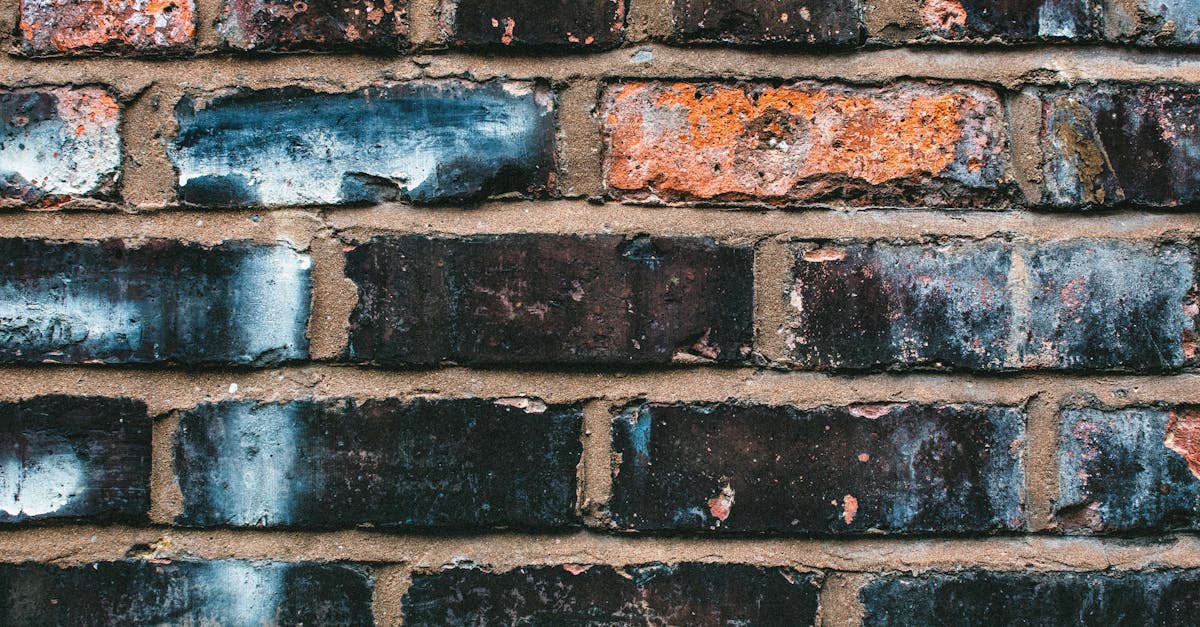
Increased Property Value with Cavity Wall Insulation
Contact Us!Types of Cavity Wall Insulation Materials
Numerous materials are commonly used for cavity wall insulation, each offering distinct advantages. One of the most prevalent options is mineral wool, known for its excellent thermal performance and soundproofing qualities. It is non-combustible and water-resistant, making it a safe choice for homes in various climates. Another popular material is polystyrene beads, which are lightweight and provide good thermal insulation. They can be easily injected into the wall cavity, resulting in minimal disruption during installation.
Polyurethane foam also serves as an effective insulation material. It boasts a high R-value per inch, making it particularly effective in tight spaces. This foam expands to fill gaps and crevices, ensuring a tight seal that prevents draughts. Additionally, cellulose insulation, made from recycled paper products, is a more eco-friendly option. Its treatment helps repel pests and improve fire resistance, appealing to environmentally conscious homeowners. Each material presents unique characteristics, allowing property owners to choose what best suits their needs.
Comparing Different Insulation OptionsCavity Walls
When selecting insulation materials for cavity walls, there are several options available, each with distinct characteristics. Mineral wool is a popular choice, known for its excellent thermal and acoustic properties. It is made from spun fibres that offer significant heat retention and soundproofing benefits. Additionally, foam board insulation provides high R-values, making it effective in preventing heat loss while being lighter and easier to handle during installation.
Common Misconceptions
Many homeowners hold misconceptions about cavity wall insulation, often fearing that it will trap moisture and lead to damp issues. In reality, proper installation with high-quality materials mitigates this risk effectively. Insulation materials are designed to allow walls to breathe, preventing moisture build-up. Regrettably, the outdated practices of the past have contributed to this fear, overshadowing advancements in insulation technology that have addressed these concerns.
Another common belief is that cavity wall insulation is suitable for all properties. Certain older homes may have specific construction features or existing issues that complicate the installation process. It's crucial to conduct a thorough assessment before proceeding with insulation. Professional evaluations will determine whether cavity wall insulation can be beneficial, ensuring that property owners make informed decisions tailored to their individual circumstances.
Debunking Myths About Cavity Wall Insulation
Are there different materials used for cavity wall insulation?
Yes, there are various materials used for cavity wall insulation including mineral wool, polystyrene beads, and foam insulation, each offering different benefits in terms of thermal performance and moisture resistance.
How can I tell if my home needs cavity wall insulation?
Signs that your home may require cavity wall insulation include noticeable drafts, high energy bills, cold spots on walls, or dampness in the interior, especially during colder months.
What are some common misconceptions about cavity wall insulation?
Common misconceptions include the belief that cavity wall insulation is unnecessary for newer homes, that it can cause damp issues, and that it is too expensive to install, all of which are often unfounded.
Related Links
Health Benefits Associated with Insulated Cavity WallsThe Long-Term Financial Benefits of Cavity Wall Insulation
Case Studies: Success Stories of Cavity Wall Insulation
The Impact of Cavity Wall Insulation on Carbon Footprint
Environmental Benefits of Insulating Cavity Walls
Cavity Wall Insulation and Its Role in Noise Reduction
Enhancing Indoor Comfort with Insulated Cavity Walls
How Cavity Wall Insulation Reduces Heating Costs